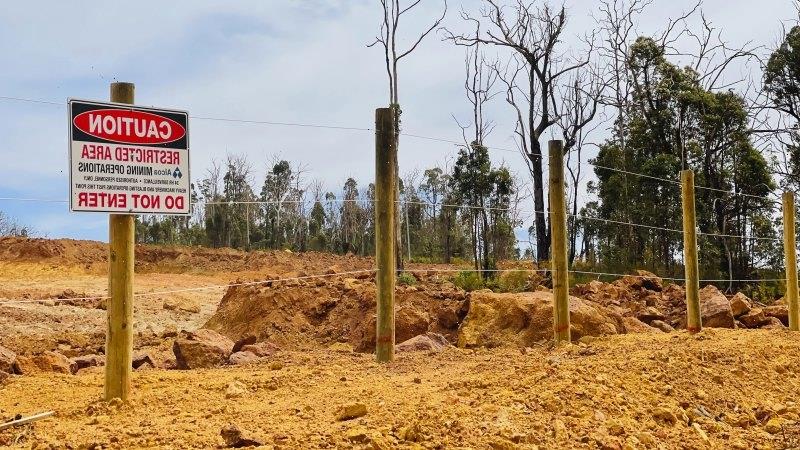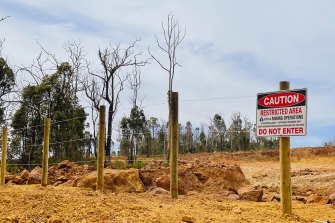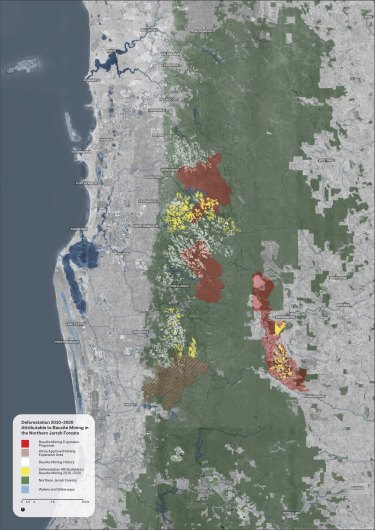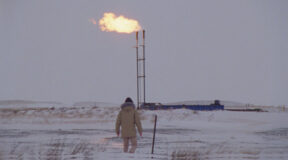More land has been cleared for bauxite mining than by the timber industry in Western Australia’s South West over the past decade, according to a new report from a coalition of conservationists.
The WA Forest Alliance, the Wilderness Society and the Conservation Council of WA say mining should cease in the Northern Jarrah Forest, a 250 kilometre-long ecosystem stretching from Toodyay to Collie, which is home to threatened species like black cockatoos and mainland quokkas.
Alcoa’s Willowdale bauxite mine in Western Australia.Credit:Jess Beckerling
The forest, which is part of the South West’s global biodiversity hotspot, was recently highlighted in an United Nations’ Intergovernmental Panel on Climate Change report as being in danger of collapsing due to a hotter and drier climate after rainfall dropped by 20 per cent in the region since the 1970s.
The new report from conservation groups,‘A Thousand Cuts’, says about 62 per cent of the 18,000 hectares of tall and medium forests in WA deforested from 2010 to 2020 were to allow for mining bauxite, a raw material used in the production of aluminium.
The figure was reached by comparing vegetation data from the Department of Primary Industries and Regional Development with public clearing statistics for bauxite mining.
The WA government has committed to a ban of native forest logging from 2024 but this has not extended to existing mining operations which are anticipated to clear, mine and revegetate about 80,000 hectares of land by 2060.
Conservationists are concerned closer to 300,000 hectares of forest will be fragmented — the breaking up of habitat into smaller untouched patches — by mining despite revegetation efforts by the companies.
Australia is the biggest exporter of alumina in the world with most of it coming out of WA.
Alcoa has a mining lease covering 712,900 hectares of land in the South West, mostly over forests, and intends to mine about 8 per cent.
The company clears about 600 hectares of land each year which is mined and rehabilitated. Its production in WA equates to about 7 per cent of total world production.
Both Alcoa and South32, which provide thousands of WA jobs, have applied in recent years to expand their footprints which would result in an additional 11,000 hectares being cleared.
Last year Alcoa planted 550,000 jarrah plants at its two WA mines. The company has planted jarrah and marri trees since 1988 after initially using dieback resistant eucalypts from eastern states.
Alcoa Mine Environmental Manager Luke Gossage said in February the company had made WA the global focus for leading mining rehabilitation.
“Our ongoing monitoring indicates the biodiversity of Alcoa’s rehabilitation is similar to that of the surrounding unmined forest,” he said.
The ‘A Thousand Cuts’ report says there were important differences between intact forest and rehabilitated mines.
“Forest reduces carbon emissions, decreases temperature, reduces rainfall decline and provides fauna habitat – and intact forest significantly outperforms rehabilitated mine sites on all of those measures,” it said.
WA Forest Alliance convenor Jess Beckerling said with rainfall decline it was unlikely the forests mined would be fully restored and it would take 200 years for the habitat for some wildlife like the red-tail black cockatoo to develop.
A map of areas mined for bauxite from 2010 to 2020 and proposed operation expansions.
“Jarrah forests are particularly difficult to rehabilitate and restore. They are highly complex ecosystems and after more than 100 years of logging and clearing, we don’t have any successful examples of restoration,” she said.
“For the black cockatoos for example, they need a minimum of 130 years for the trees to form nesting hollows, that’s for the Carnaby’s and Baudin’s, and for the red-tails its more than 200 years.
“We can’t wait 200 years for critical habitat to hopefully be restored. To prevent extinctions we need to protect and restore habitat, not continue to clear it.
“The fact is we cannot restore these ancient, complex ecosystems, particularly not now with the rainfall decline the region has experienced.”
The report concludes that with the environmental pressures on the Northern Jarrah Forest there should be a strategic assessment undertaken by the independent Environmental Protection Authority to determine the cumulative impacts on the ecosystem.
A similar process was undertaken by the authority for the Ningaloo Gulf which determined more protective measures and areas should be activated.
The new report also recommended secretive state agreements between the miners and the government be made public and for the creation of a publicly accessible central record of native vegetation and biodiversity data which tracked its extent and condition across WA.
An Alcoa spokeswoman said the company had rigorous systems, procedures and management plans in place supporting it to make progress in its mine rehabilitation adaptation plans to a drier climate.
Alcoa undertook a rehabilitation program to restore the forest and continued to evolve the processes and outcomes to reflect changing expectations and issues, including changing climate conditions.
“Currently, we are working with stakeholders to investigate a concept of ‘ecological thinning’ which may be used to actively manage pressures on the forest, including for mature mine rehabilitation stands, posed by a drying climate,” she said.
“We have also conducted extensive research on rehabilitation seed mixes that can support forest growth in current and projected future climates.”
Alcoa also stated it took care to manage risks to all species of black cockatoos highlighting a partnership with BirdLife Australia which had seen more than 25,000 seedlings planted, 24 artificial nests installed and 500 roosts monitored.
A South32 spokesman said it recognised the importance of biodiversity and ecosystems and its responsibility to minimise the impacts of land clearing and rehabilitate ares that were disturbed.
“We have committed to continually rehabilitating land we clear as a result of our operations, helping to re-establish flora and fauna habitat. Where there is any residual impact, we will offset habitat loss through direct and indirect offset packages,” he said.
“In 2021 we updated our internal environment standard with new minimum performance requirements for land disturbance and rehabilitation activities.”
He also said if expansion was approved clearing would be avoided at areas identified as having high environmental value.
The Morning Edition newsletter is our guide to the day’s most important and interesting stories, analysis and insights. Sign up here.
Most Viewed in Environment
From our partners
Source: Read Full Article







